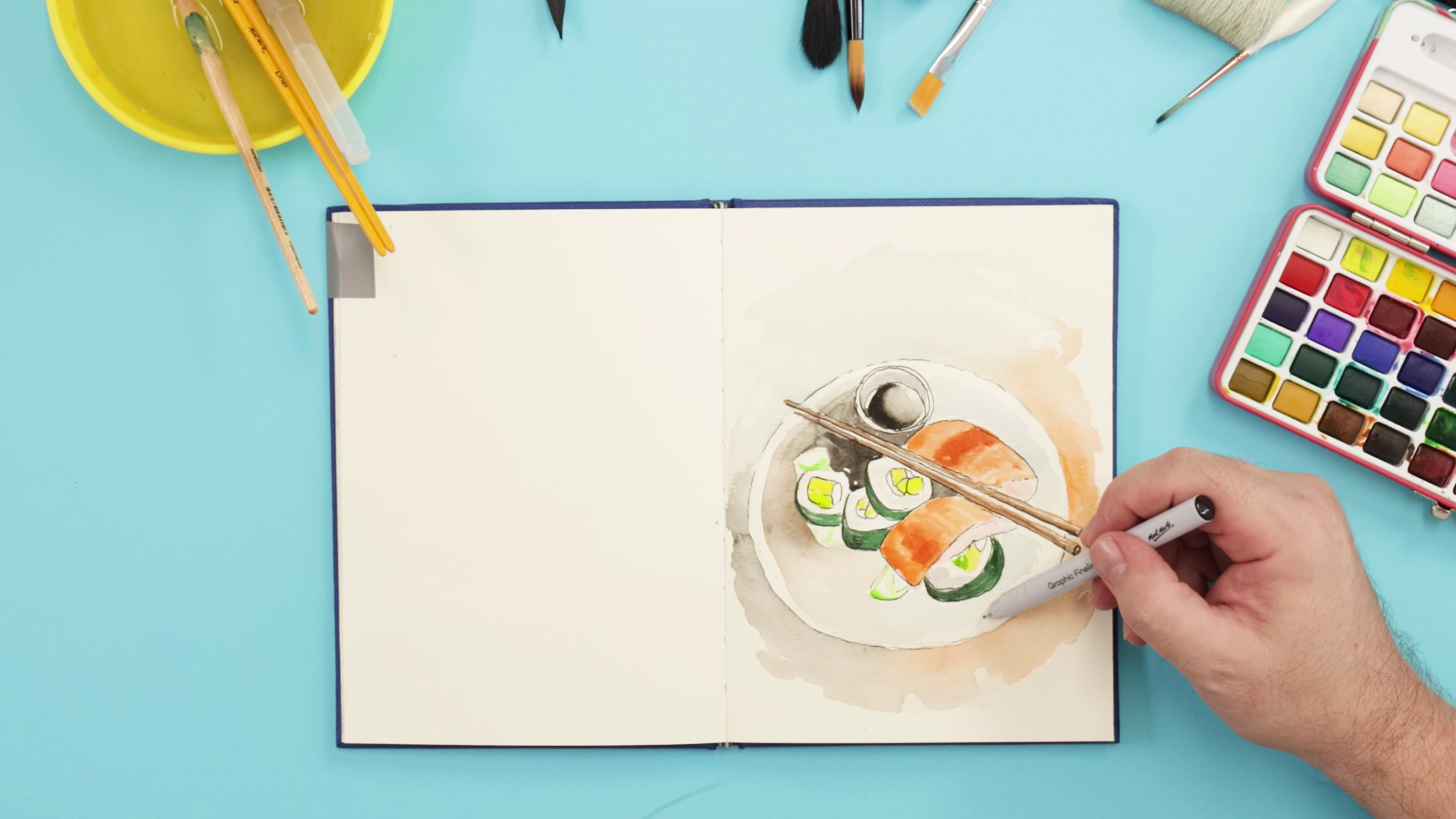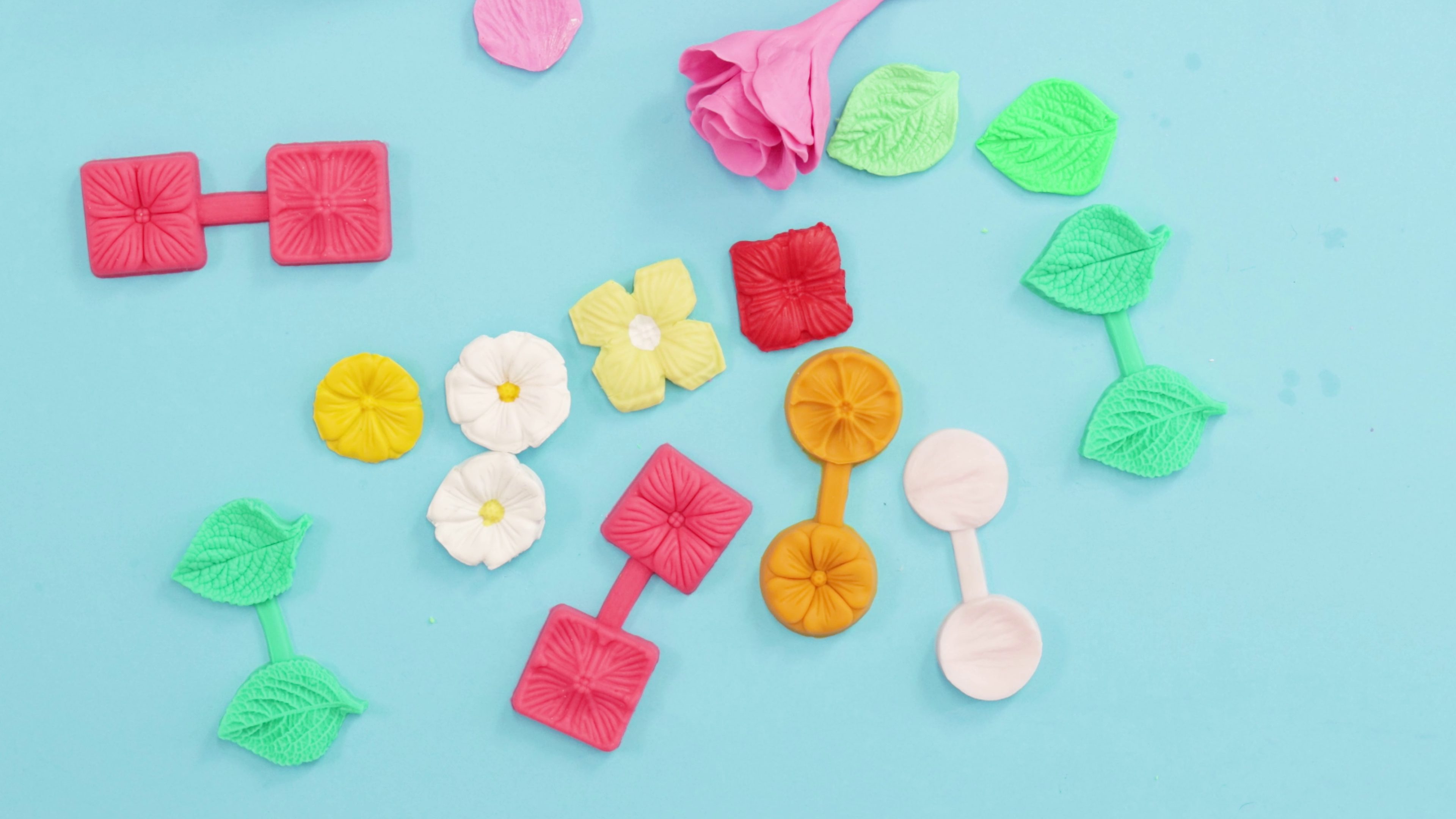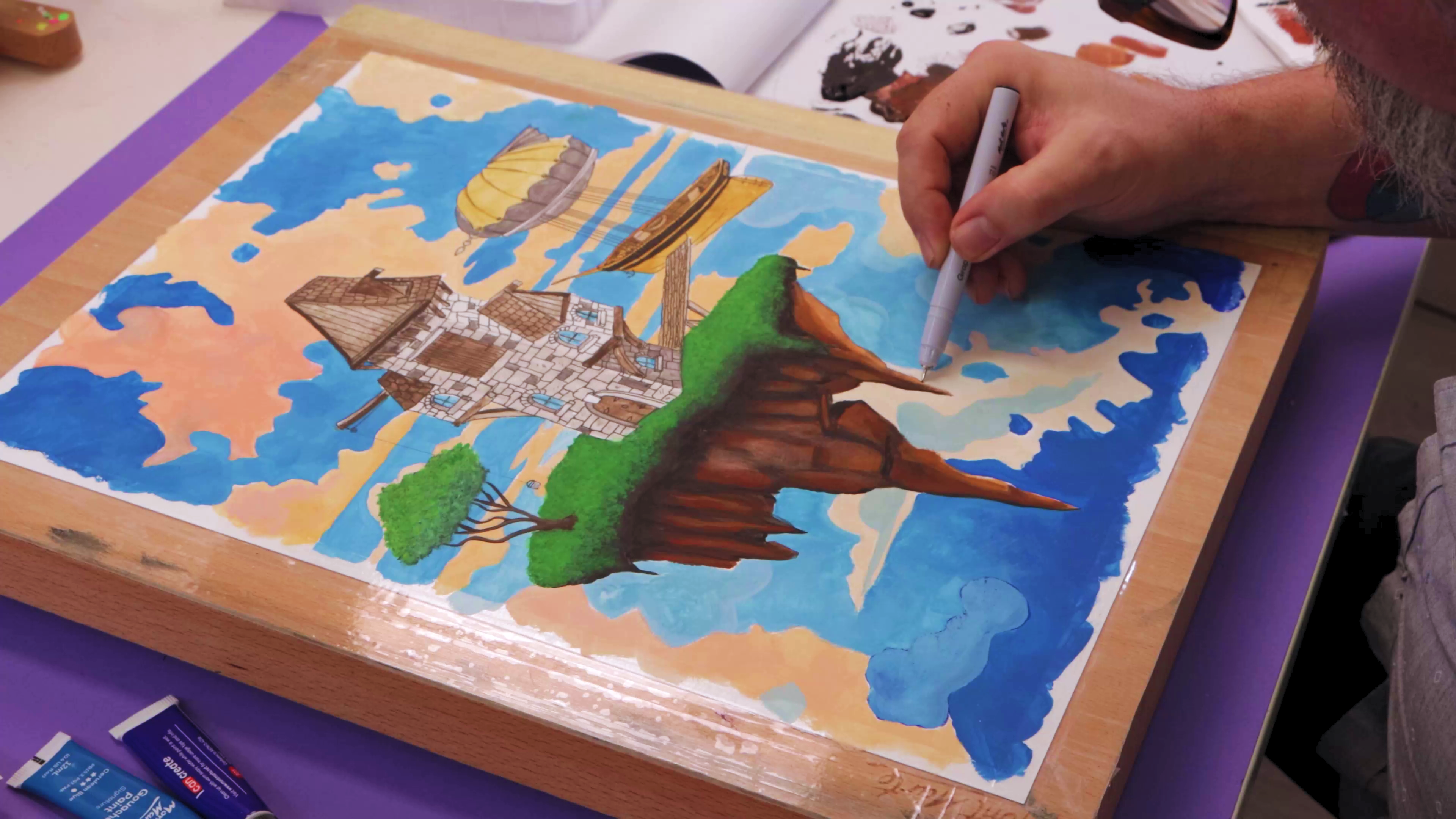Create a shire draught horse sculpture with polymer clay part 2
In this project we paint the Shire Horse we created with Mont Marte Polymer Clay. If you didn't see the first lesson you can watch it here: How to Sculpt a Shire Draught Horse. Today's lesson covers acrylic undercoating techniques and how to tonally blend a top coat using Mont Marte Water Mixable Oils. We also demonstrate a great technique for creating a realistic muddy ground for our horse to stand in.
Step 1. Undercoating the body in Acrylic.
The first step is to undercoat the body with an acrylic undercoat. All paints used will be Satin Series Acrylic. The colours will be the same as the top coat. Start by painting Lamp Black into the mane, tail, eyes, nostrils and the legs from the feathers to where they meet the body. Then create a mix from 1 part Yellow Ochre to 1 part Burnt Umber and paint it in to the feathers. When you do this make sure you get it into the crevices. For the body colour mix Burnt Umber, Umber and Burnt Sienna in equal proportions and paint in the entire body bar the head. Try to keep the coat as thin as possible.
Step 2. Under coating the head in Acrylic.
Paint the head in with Yellow Pink. Cut in around the eyes and nostrils. Next create a liver colour with a mix from Yellow Pink, Paynes Grey and Burnt Umber and paint in the side of the face. Blend out the tone as you move to the eyes. Next paint the stripe down the head. This is called a Blaze. Don't make it too symmetrical or it will look contrived. The final step for this stage is to use more of that body colour over the head. Cut it in around the eyes and paint up to the Blaze. Fade the tone out into the liver colour.
Step 3. Adding an Acrylic Glaze over the Body.
Whilst a horse’s coat is 1 single tone, it has many subtle nuances. This complex depth is best suggested by creating a glaze over the horse. To create this, mix 1 part Burnt Umber to 1 part Burnt Sienna to 1 part Acrylic Matt Medium. Paint this over the horse and appropiate areas of the head). Use a soft taklon filbert for this. Let this dry.
Step 4. Top coating with Water Mixable Oil Paint.
Oil paint is used to create the final coat, and in this case we are using Water Mixable Oils. Oil paint has 2 benefits. One, it dries to a semi mat finish that is in keeping with the natural lustre of a horse’s coat and 2), because the Oil paint dries so slowly it allows the blending of tones together to suggest the hollows of the muscle tones and such. As stated previously this step is all created with Water Mixable Oil Paint. So begin by laying out some Burnt Sienna, Burnt Umber and some Mars Black. The technique is as follows:
1) Lay down a base coat of Burnt Sienna over the chestnut areas of the horse.
2) Blend Burnt Umber into the hollows. Ensure the edges of the Burnt Umber blend into the Burnt Sienna so the transition is smooth.
3) Blend some Mars black into the deepest parts of the hollows. Blend this into the Burnt Umber.
4) Next, re apply some Burnt Sienna onto the high points of the model and blend this in.
Step 5. Detailing.
The horse is essentially done but we still need to detail it. So paint the blaze with Zinc White. Paint a very thin coat over the muzzle with Flesh Tone. Paint a thin coat of Burnt Umber over each eye and add a spot of Zinc White into the eye to suggest a highlight. Dry brush Burnt Umber over the mane and tail. Paint the legs in with Mars Black and lastly dry brush Zinc White over the feathers.
Step 6. Creating the environment.
To make our model look more realistic we can add a layer of faux mud onto the base. To create this ‘mud’ , take an Umber pastel, a Raw Umber soft Pastel and a Sienna soft pastel. Break them up and crush them in to a shallow bowl with the handle of a palette knife. Don't crush the pastel up too much as the finished product will look more realistic with a few lumps in it. Pour the contents out onto an easy clean palette and pour in some Acrylic Matt Medium. Pour in the medium in stages until the mix is the viscosity of thickened cream. Draw a profile line onto the base around the horse where you wish to place the mud and carefully ladle it onto the area with a palette knife. Smooth out the mud to the edge of the profile line suggest hoof prints. Pour in a small amount of Acrylic Gloss Medium into each hole and spread it out so the coat is flat and very even. The last step is to paint a little bit of the mud around the feathers.
Material List
- Mini Detail Brushes Signature 5pc
- Water Mixable Oil Paint 37ml (1.25oz) - Flesh
- Water Mixable Oil Paint 37ml (1.25oz) - Zinc White
- Water Mixable Oil Paint 37ml (1.25oz) - Burnt Sienna
- Water Mixable Oil Paint 37ml (1.25oz) - Burnt Umber
- Water Mixable Oil Paint 37ml (1.25oz) - Mars Black
- Acrylic Medium Premium - Gloss 135ml (4.6oz)
- Drawing Set Signature 8pc
- Plastic Brush Washer Signature
- Acrylic Medium Premium - Matte 135ml (4.6oz)
- Gallery Series Brush Set Acrylic 4pce
- Palette Knife Signature No.10
- Soft Pastels Signature 12 Colours



































